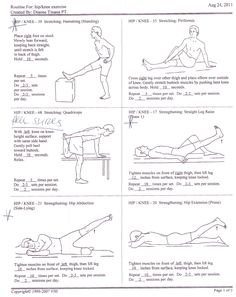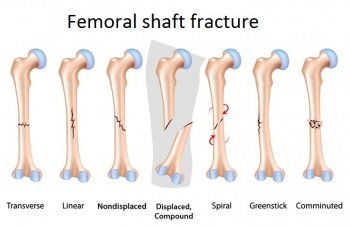In today article I will discuss about exercises you can do to help you build more bone density, more strength and bone quality in your femoral neck.
So, where is that?
Femoral neck, it is the neck of the femur. the femur is the leg bone, the thigh bone connecting the knee joint to the pelvis. So, this whole bone from pelvis to knee is the femur.
Now, why do we care about it?
Well, there are certain parts of our body that has more soft bone, or trabecular bone. Throughout our body, we have cortical bone, very hard bone, and we have the soft spongy bone. So, the long shaft of our femur that has lots of cortical bone. It's the type of bone that you would give your dog to chew on. Usually, it's a cross-section of the femur of a cow, and you know, your dog will chew on it for weeks sometimes because it's very strong cortical bone. But, that bone in the neck of your femur, just as the bone in each vertebrae, in your ribs, in your skull, those bones have a very high percentage of trabecular bone, soft spongy bone, so they're at a higher risk of being fractured if you're doing things that require or put it above and beyond what the bone quality is able to withstand, or what the bone strength is able to withstand.
So, let's discuss about building, and then the second thing we're going to discuss about is how to protect in exercises, specifically neck of your femur. So, a recent very small study, but nicely done study, in the Journal of Physical Therapy Science looked specifically at whether closed kinetic chain or open kinetic chain exercises helped the neck of the femur. And they found that closed kinetic chain...

So, whenever a person is standing and his feet are in contact with the floor, that exercise is now a closed kinetic chain exercise. So, a squat, a lunge, jumping, stepping, you have that foot contact to the ground. That is a closed kinetic chain. In an open kinetic chain, you might have been given such an exercise in rehabilitation, or you'll sometimes see it in the gym where there are pads to hook your feet under, and you're asked to lift the weight, and so the exercise, there's no ground contact with the base of your feet, and so that is an open kinetic chain exercise, versus a squat where your feet are in contact with the floor and you're pressing up tall. So, let's just review the form of doing a proper squat. So, ideally, with time, and as you feel strong, and as your form is solidified, you want to eventually move to doing weighted squats. So, some of physiotherapy clients who already have spinal fractures, they'll put weights or a weighted belt on. There's clients, with healthier spines, will use the weights on their shoulders. Either way, your gaze and your chest are kept up. Before you even begin your squat, you're going to think about the space between your feet, and you're going to spread that space all the while that you do the squat, and you're going to spread the space between your knees. So, if you even just do that now, if you stood up as you're reading to this blog, you'd go, "Wow, that really engages the legs so much more." So just imagine, my imaginary weights are on my shoulder behind neck, I'm taking a breath in. I start to blow, tightening my pelvic floor to keep my pelvic floor safe. As I'm coming down, I'm spreading the space between my feet, and my eyes are just above the horizon, and then I push up firmly into the Earth. So, that is a squat. So, there are other great exercises, and you can find them on Exercise for Better Bones, for strengthening the neck of your femur. Now, part two, as promised, is how to protect your femur now that you know you have low bone density. So, for those of you who love practicing yoga, I highly recommend that you avoid doing the pigeon pose. You can still do a lovely figure four. You'll see that stretch, also, in Exercise for Better Bones, but it's the same type of rotation in a figure four, lying on the floor, that you would get, but without the loading of your body over an already susceptible neck of the femur. So, you don't want to put the neck of your femur under all that torque, and then put the weight of your body on it. So, exercise intelligently, keep safe.
